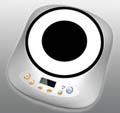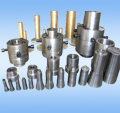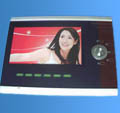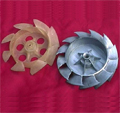

| Address: | PDS Enterprise Inc. 1650 West Artesia Blvd, Suite 278 Gardena, CA90248 |
| Phone: | 1-843-408-0142 |
| Email: | pdsenterprise@gmail.com sales@coolprototyping.com |


Home>Popular Page
48. Rapid Prototyping Technologies Enhance Innovation Opportunity
In the product development, engineering, and other form-giving application domains, rapid prototyping (RP) technology can offer an excellent deliverable for various applications. Prototyping can be used for concept product design, ergonomic testing, test fitting, functional testing and even small-batch production tooling.
There are various rapid prototyping technologies available for use including Fused Deposition Modeling (FDM), Stereolithography (STL), Selective Laser Sintering (SLS), and 3D Printing. Each of these technologies has advantages and disadvantages.
Fused Deposition Modeling technology is marketed commercially by Stratasys, which also holds a trademark on the term. Like most other RP processes FDM works on an "additive" principle by laying down material in layers. A plastic filament or metal wire is unwound from a coil and supplies material to an extrusion nozzle which can turn on and off the flow. The nozzle is heated to melt the material and can be moved in both horizontal and vertical directions by a numerically controlled mechanism, directly controlled by a computer-aided design software package. In a similar manner to stereolithography, the model is built up from layers as the material hardens immediately after extrusion from the nozzle.
Stereolithography is an additive fabrication process utilizing a vat of liquid UV-curable photopolymer "resin" and a UV laser to build parts a layer at a time. On each layer, the laser beam traces a part cross-section pattern on the surface of the liquid resin. Exposure to the UV laser light cures, or, solidifies the pattern traced on the resin and adheres it to the layer below.
Selective laser sintering is an additive rapid manufacturing technique that uses a high power laser to fuse small particles of plastic, metal, ceramic, or glass powders into a mass representing a desired 3D object. The laser selectively fuses powdered material by scanning cross-sections generated from a 3D digital description of the part on the surface of a powder bed. After each cross-section is scanned, the powder bed is lowered by one layer thickness, a new layer of material is applied on top, and the process is repeated until the part is completed.
3D printing is a unique form of prototype creation that is rooted in traditional rapid printing technology. A three dimensional object is created by layering and connecting successive cross sections of material. 3D printers are generally faster, more affordable and easier to use than other additive fabrication technologies. While prototyping dominates current uses, 3D printing offers tremendous potential for retail consumer uses, especially because the cost of production is less than other methods, and the part build time is minimal. In the latest incarnations, 3D color printing is also available. This means that a part can be printed to represent the colors of the finished product, to show label concepts or requirements, or to indicate the results of stress analysis or other failure mode effects (FME) analysis.
For the most part, all rapid prototype systems require a 3D computer model to start the process. In most cases a significant amount of file preparation must be undertaken to get a file to generate a correct rapid prototype model.
In the near future, rapid prototyping technology will become more widespread and pervade even to the home. For now though, for timely and expert delivery, the use of a service bureau is the best way for most innovative companies, individuals and organizations.
 We are constantly looking for new products in order to grow our business and Invention Home has enabled us to streamline that process much more quickly.
We are constantly looking for new products in order to grow our business and Invention Home has enabled us to streamline that process much more quickly. Marsha Dunmyre
CA, U.S.A
Cool Prototyping Copyright 2008-2009 © All Rights Reserved. Rapid Prototyping






